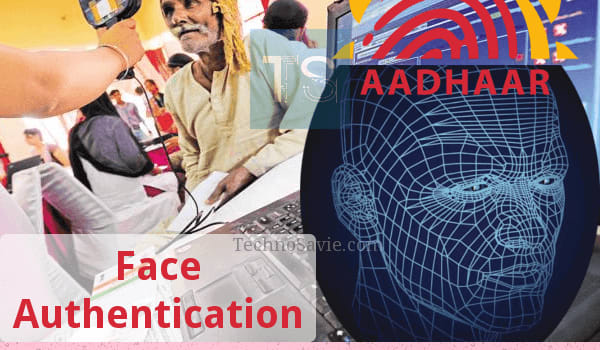
On 15th of January, the Unique Identification Authority of India (UIDAI) has decided to roll out new face recognition technology as an additional biometric option for Aadhaar authentication. The new Aadhaar Face Authentication feature can be used in fusion with the existing fingerprint or iris scans or One-Time Passwords (OTP).
The UIDAI has clarified that that face authentication would be allowed only in fusion mode meaning along with either fingerprint or iris or OTP to verify the details of Aadhaar holder.
With this move, UIDAI will upgrade 3-factor authentication to verify someone using:
- Aadhaar number or Virtual ID
- Photograph
- Fingerprint / Iris / Face authentication / OTP
Therefore, this requires all the 3-options to complete Aadhaar verification .
This move has come after UIDAI introduced a new layer of security – Aadhaar Virtual ID (VID), Limited KYC and UID Tokens – to strengthen privacy and security of Aadhaar database. Through this new security layer, UIDAI has allowed Indian citizens to use & create a Virtual ID to avoid sharing their unique identity numbers when accessing government and other services.
The Virtual ID, which will be issued from 1st March 2018, can only be generated, replaced or cancel by the Aadhaar number holder from time to time.
Aadhaar Face Authentication
The Aadhaar face authentication will be enabled in fusion mode on registered devices by 1st July 2018 to make it easier for people facing difficulty in authentification through fingerprint and Iris.
READ MORE Aadhaar Controversy: RBI Clarification & Virtual ID
How it will help?
Aadhaar Face Authentication will help in inclusive authentication of those who are not able to bio-metrically authenticate due to their worn out fingerprints, old age or hard work conditions.
Face Authentication shall also be allowed on need basis.
According to UIDAI statement:
Face authentication with liveness detection can be used as an additional factor to increase security.
Liveness detection enables any system to confirm that the biometric information is provided by a genuine and living person.
How this facility will roll out?
To facilitate Aadhaar face authentication service:
- UIDAI will work with biometric device providers to integrate face modality into the certified registered devices and also may provide standalone Registered Device service.
- UIDAI will provide Software Development Kits (SDKs) and Registered Device (RD) services in various operating systems which will have the ability to capture face image, check liveness, and create digitally signed and encrypted authentication input.
- The support for the authentication agencies will be rolled out by 1st March 2018.
The agencies which use Aadhaar verification will be required to ensure inclusive authentication, when single modality is not working for specific residents.
Present Scenario
Right now, UIDAI allows only two modes of biometric authentication:
- Fingerprint authentication.
- Iris authentication.
Aadhaar Virtual ID (VID), UID Token & Limited KYC claimed to strengthen privacy and security of Indian citizens.
• VID (16-digit) can only be generated, replaced or revoked by the Aadhaar number holder.Read More 👉 https://t.co/XpU1H4lPoN#Aadhaar #VirtualID #KYC pic.twitter.com/V4sIgYyZ8W
— Techno Savie (@TechnoSavieNews) January 12, 2018






